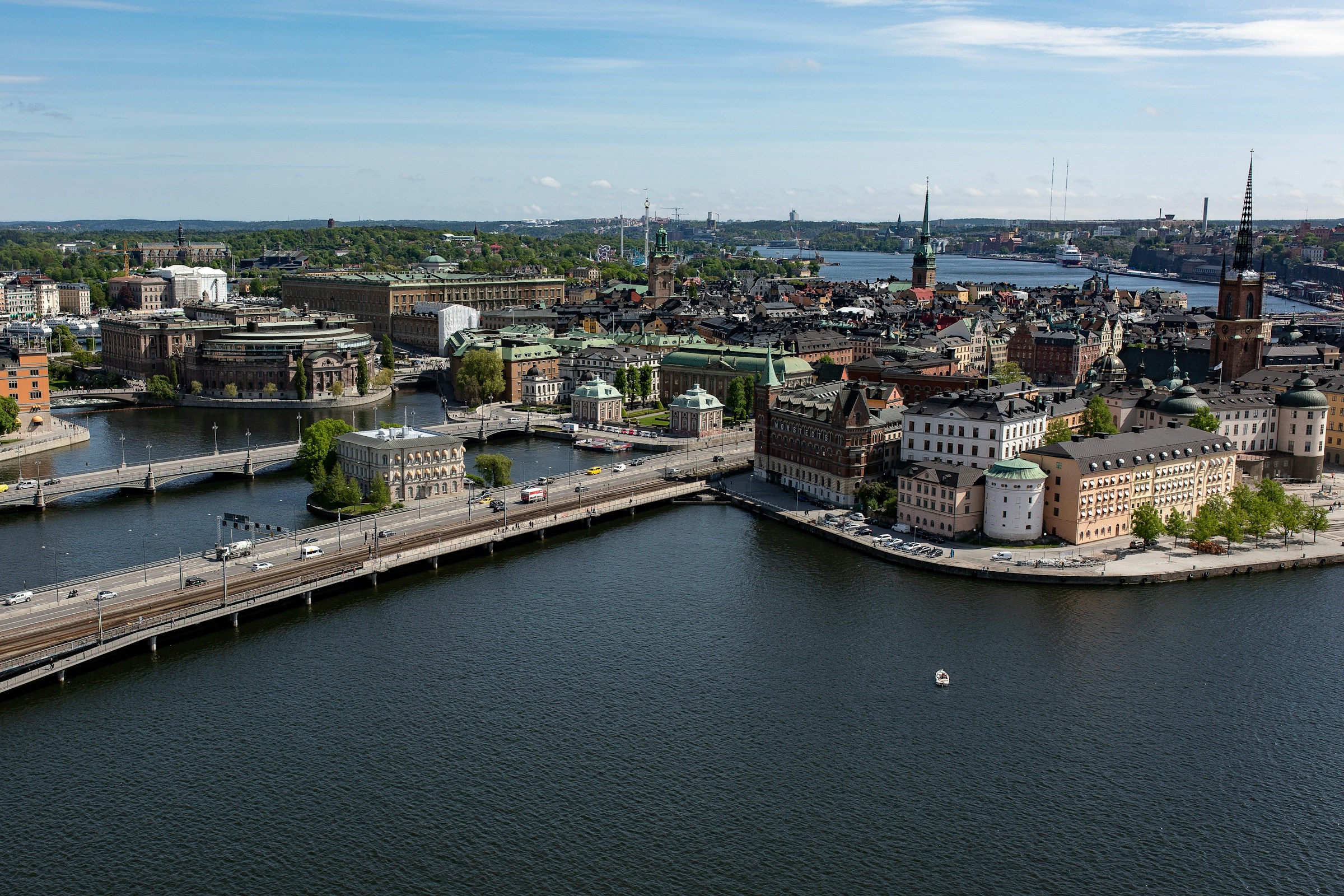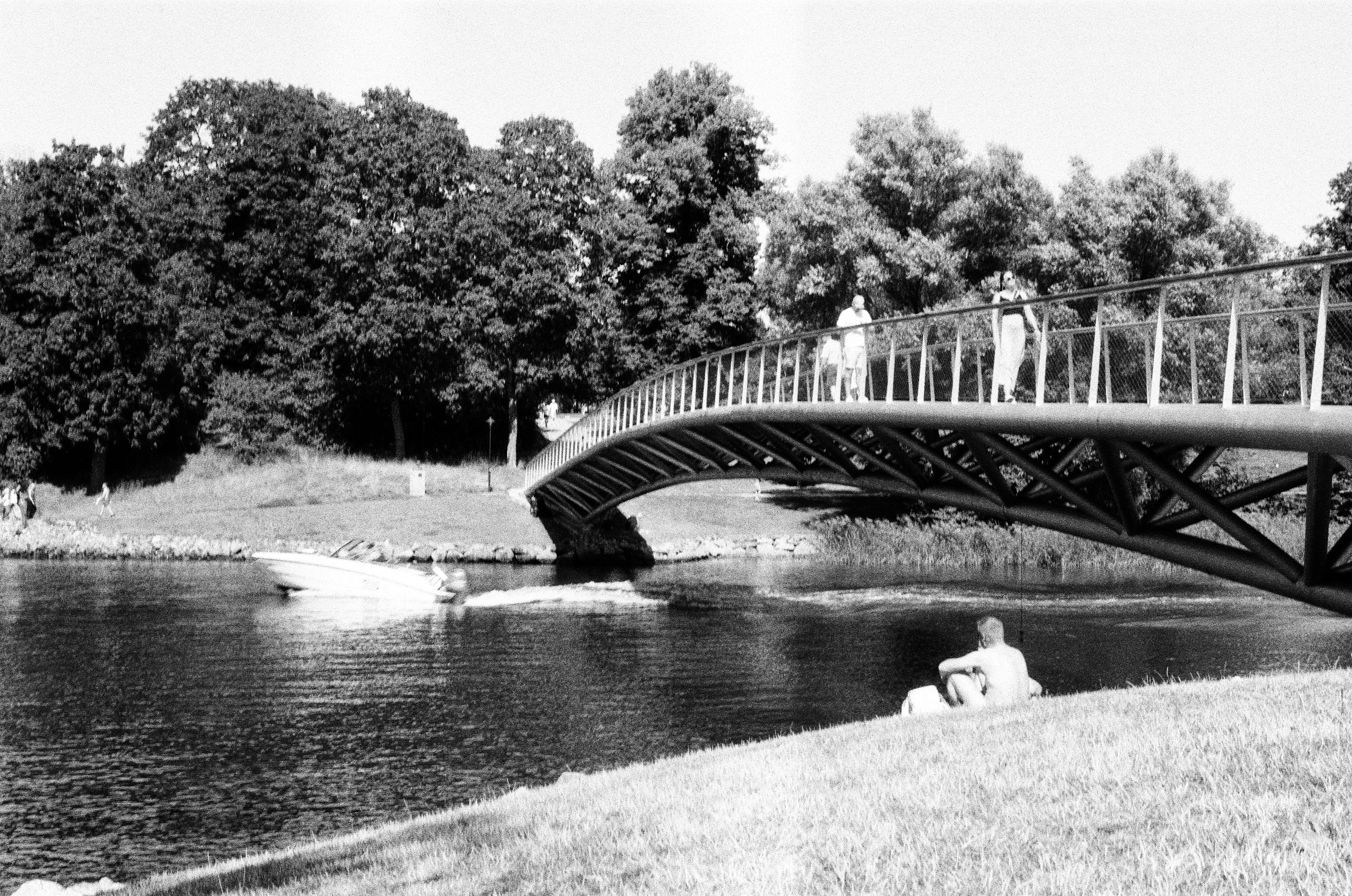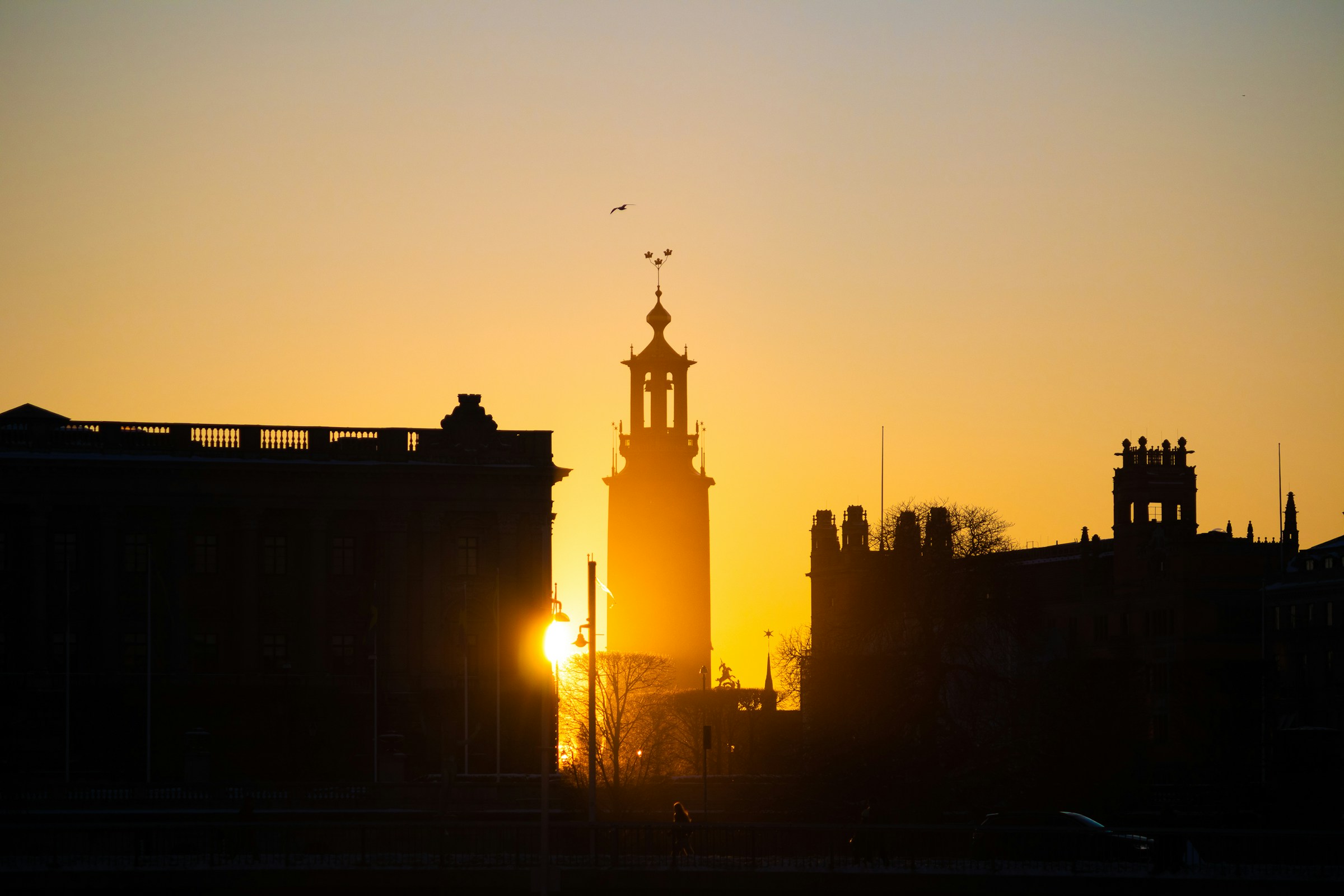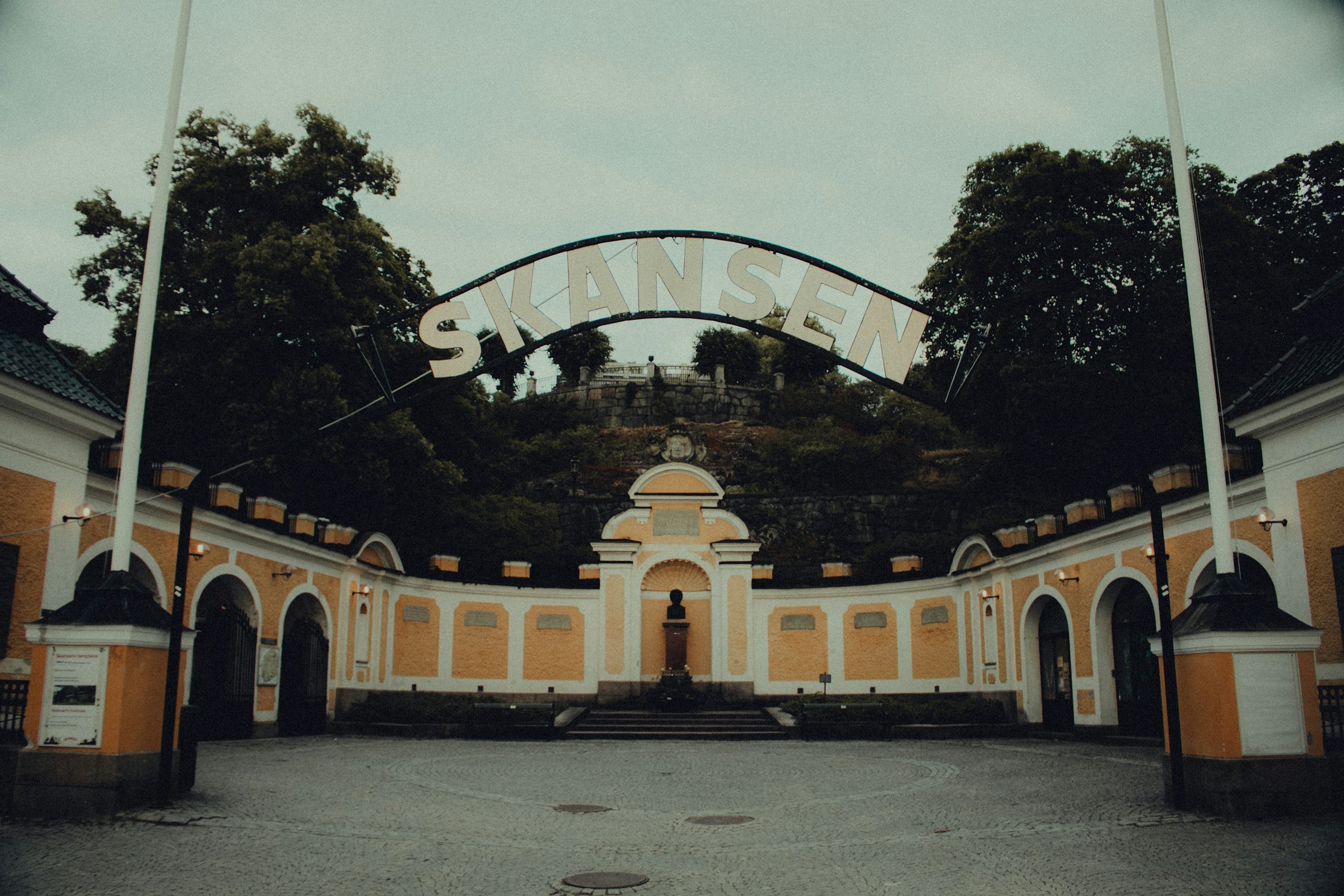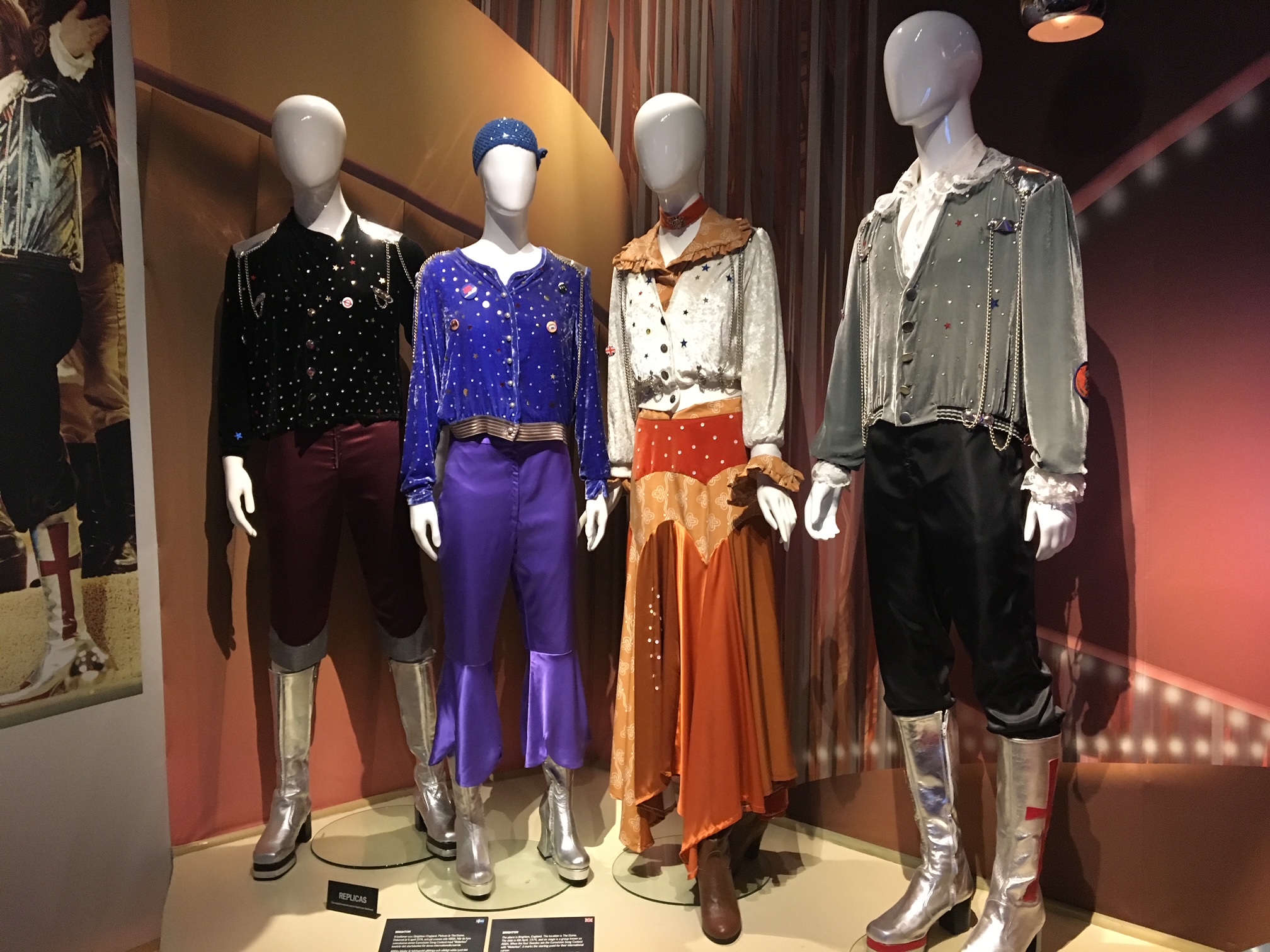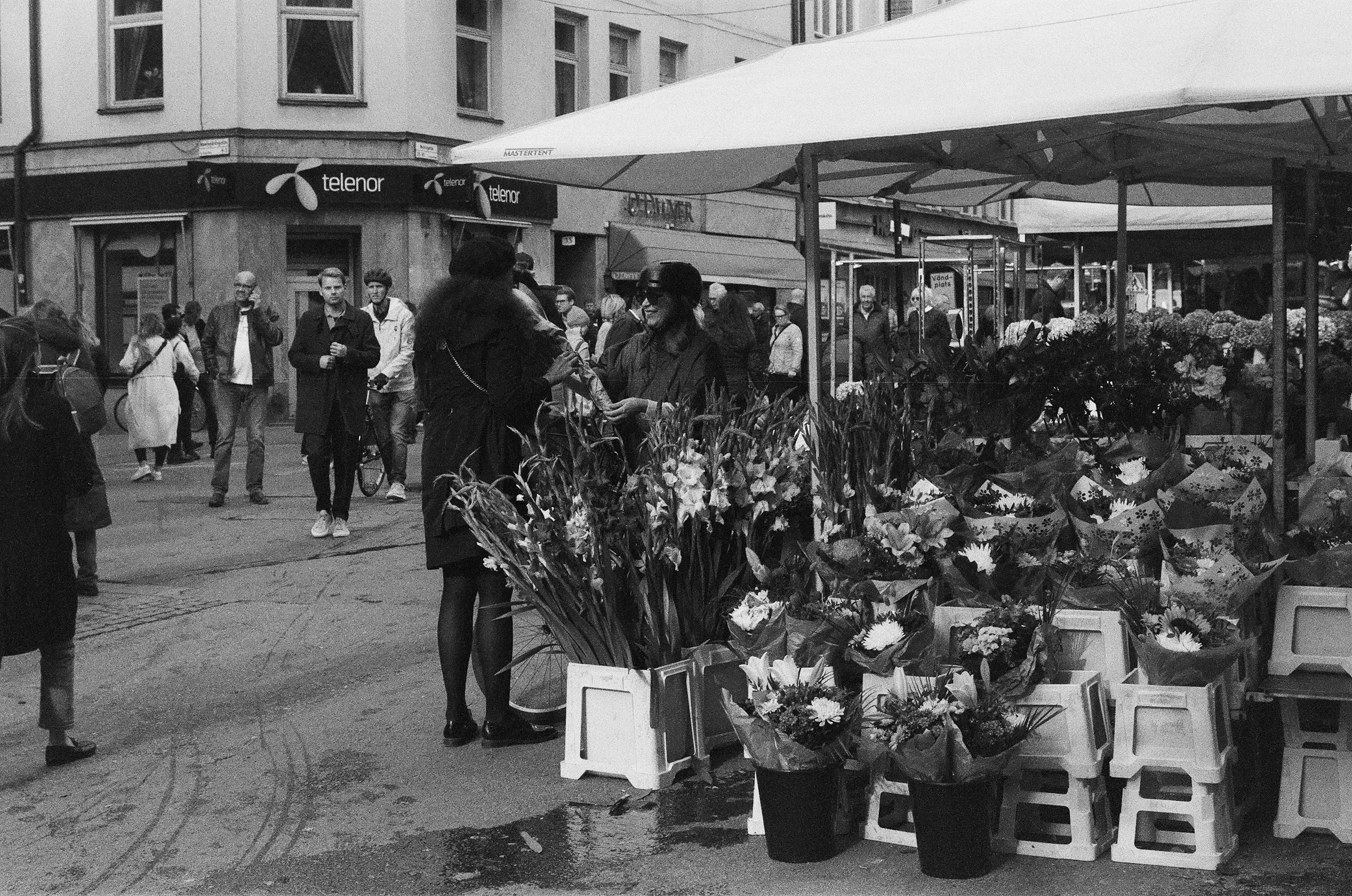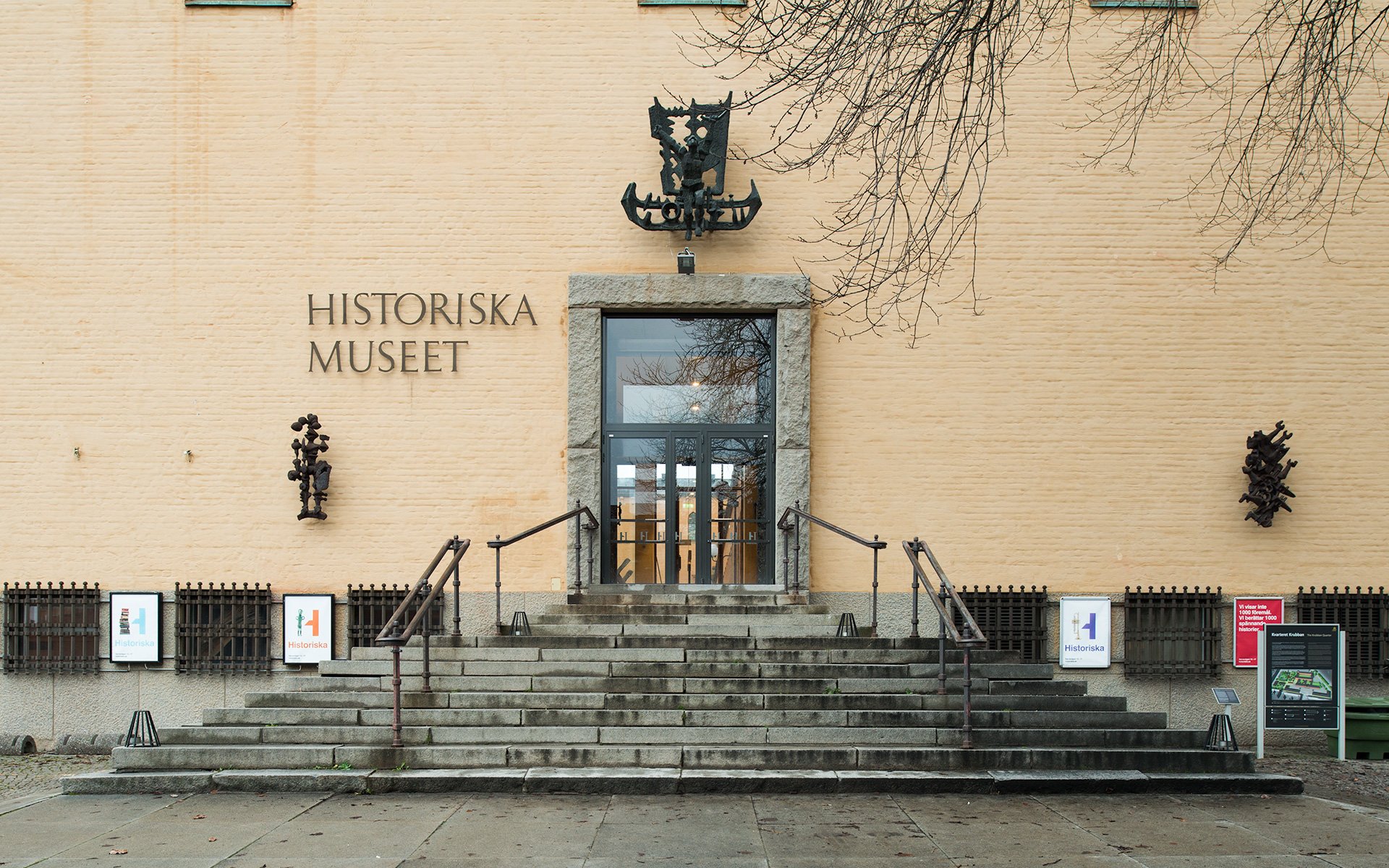A travel guide to
Stockholm.
Known for
Museums, sustainable living, culinary scene, green spaces, modern architecture…
This is Stockholm.
Welcome to Stockholm, the enchanting capital of Sweden, where picturesque islands, historic charm, and modern innovation converge to create a captivating destination. Situated across 14 islands on the Baltic Sea, Stockholm is a city of contrasts, where medieval streets blend seamlessly with contemporary architecture, and lush green parks harmonise with vibrant urban spaces. Whether you’re exploring the cobblestone alleys of Gamla Stan (Old Town), admiring the sleek design of modern museums, or cruising through the archipelago’s tranquil waters, Stockholm offers a wealth of experiences waiting to be discovered.
Looking for something in particular? Use the quick links below to navigate to the section you need.
Stockholm Metro
Stockholm Metro, also known as the Tunnelbana (T-bana), is a rapid transit system that serves the city and its surrounding areas. It is known for its stunning art installations, with nearly all of its 100 stations decorated with paintings, mosaics and sculptures created by various artists. The metro system consists of three main lines (blue, red, and green) and one shorter line (yellow), connecting residential areas and attractions throughout the city. With frequent service and reliable operations, Stockholm Metro offers a convenient and efficient way for locals and tourists to navigate the city’s diverse landscape.
Metro Tickets
Tickets for Stockholm Metro can be purchased at ticket vending machines located within the metro stations or via mobile apps. The most common is the single-use ticket, which is valid for a limited time period and allows unlimited transfers within that time frame. Alternatively, metro users can use a contactless payment form such as a phone or credit card for pay as you go travel. Tickets are typically based on zones, with different prices depending on the distance travelled. Additionally, there are discounted fares available for children, senior citizens and students. It’s important to note that tickets must be valid and properly activated before boarding the metro, and that ticket inspections are regularly conducted by transit authorities.
Operating Hours
Stockholm Metro operates from early morning until late evening, providing regular service throughout the day. Generally, trains run from around 5:00 AM until midnight on weekdays and from 6:00 AM until midnight on weekends. However, the exact operating hours may vary slightly depending on the specific metro line and the day of the week. During off-peak hours, trains may run less frequently, so it’s advisable to check the schedule in advance, especially if traveling late at night or early in the morning. Overall the Stockholm Metro offers reliable transportation options for both commuters and tourists, with convenient operating hours to accommodate various schedules.
Accessibility
Stockholm Metro is designed to be accessible to passengers with disabilities and mobility challenges. Many stations are equipped with elevators, ramps, and tactile paths to facilitate easy navigation for individuals using wheelchairs, walkers, or strollers. Additionally, platforms are generally level with the train floors, allowing for seamless boarding and disembarking.
For visually impaired passengers, tactile maps and signage are installed at stations, providing information about the layout and facilities. Announcements are also made on trains and platforms to assist passengers in identifying stations and transferring to other lines.
Furthermore, designated seating areas and priority spaces are available on trains to accommodate passengers with disabilities, pregnant individuals, and seniors.
While efforts have been made to enhance accessibility across the Stockholm Metro system, it’s important to note that some older stations may still have limitations. However, ongoing improvements are being made to ensure that the metro remains inclusive and accessible to all passengers.
Alternative Transport
In addition to the metro, Stockholm offers several alternative forms of public transportation to navigate the city:
Buses
Stockholm’s extensive bus network covers the entire city and its suburbs, providing comprehensive service to areas not served by the metro. Buses operate on various routes, including express lines, night buses, and feeder buses, offering convenient options for reaching destinations throughout Stockholm.
Commuter Trains (Pendeltåg)
The Pendeltåg commuter train system connects Stockholm with nearby towns and suburbs, providing fast and efficient transportation for commuters and travellers. With multiple lines running throughout the day, commuter trains offer convenient access to destinations beyond the city centre.
Trams
Stockholm has a network of tram lines serving the inner city and surrounding neighbourhoods. Trams offer a scenic way to explore Stockholm, with routes passing through historic districts, waterfront areas, and vibrant urban spaces.
Ferries
Stockholm’s archipelago is accessible via regular ferry services, offering picturesque journeys through the city’s scenic waterways. Ferries connect central Stockholm with nearby islands, providing opportunities for leisurely cruises and island hopping adventures.
Commuter Boats (SL Commuter Boats)
SL commuter boats offer an alternative mode of transportation for traveling between central Stockholm and the city’s outer islands. These boats operate on scheduled routes, providing a convenient way to explore the archipelago and reach destinations not accessible by other means.
These alternative forms of public transportation complement the Stockholm metro, offering passengers a diverse range of options to explore the city and its surrounding areas.
Getting to and from Stockholm Arlanda Airport
Stockholm Arlanda Airport
The Arlanda express operates from Stockholm Arlanda Airport to/from Stockholm Central Station every 10-15 minutes throughout the day. The travel time is 18 minutes. It costs extra to purchase a ticket onboard the train, so you are recommended to buy tickets at the airport information desks, from a ticket machine or online.
Commuter trains depart twice and hour from Arlanda and take 38 minutes to Stockholm and 18 minutes to Uppsala. Buy your ticket at the Arlanda Central station desk, in the SL app or at the normal SL and UL sales points.
Things to do in Stockholm
Explore the enchanting streets of Stockholm, where every corner offers a glimpse into the city’s storied past and vibrant present. Admire the majestic beauty of the Royal Palace, stroll through the charming lanes of Gamla Stan. Indulge in the flavours of traditional Swedish cuisine, from savoury meatballs to delicate gravlax, in the cozy cafés that line the waterfront, creating memories as timeless as the city itself.
Weather
In Stockholm, the weather varies significantly throughout the year, experiencing distinct seasons. Summers are generally mild to warm, with average temperatures ranging from 15°C to 25°C (59°F to 77°F), offering long days with plenty of sunshine. Winters are cold and snowy, with temperatures typically hovering between -5°C to 3°C (23°F to 37°F), creating a picturesque winter wonderland. Spring and autumn bring transitional weather, with mild temperatures and occasional rain showers, making them ideal seasons for exploring the city’s parks and cultural attractions.
Average monthly temperatures
January -1°C (30ºF) | February -1°C (30ºF) | March 2ºC (36ºF) | April 7°C (45ºF) | May 12°C (54ºF) | June 16°C (61ºF) | July 18°C (64ºF) | August 18°C (64ºF) | September 13°C (55ºF) | October 8°C (46ºF) | November 4°C (39ºF) | December 1°C (34ºF)
Currency
The Currency in Sweden is the krona SEK.
Symbol: kr
ISO Code: SEK
Coins and banknotes come in denominations of 500 kr, 100 kr, 5 kr, 10 Kr, 50 kr, 1Kr, 20 kr, 200 kr
Although Sweden has been a member of the European Union since 1995, it has never adopted the Euro and has no plans to do so. It is not possible to pay with Euros in Sweden.
Please be aware that as Sweden progresses towards being a cashless society, some vendors might not accept cash.
Tipping
In Sweden, tipping is not as common as it is in many other nations. Though unexpected, it’s always appreciated. In Sweden, it’s common to round up to the next large number while dining out. You can round up to 300 SEK, for instance, if your bill is 280 SEK.
Internet
Getting access to internet in Stockholm is pretty straight forward. Free Wi-Fi can be found in most coffee shops, fast food restaurants and hotels. Whether you’re a tourist or a local, staying connected is essential, and Stockholm has plenty of spaces with free Wi-Fi. A great resource is this Wi-Fi map of Stockholm which shows all the public Wi-Fi hotspots in the city.



